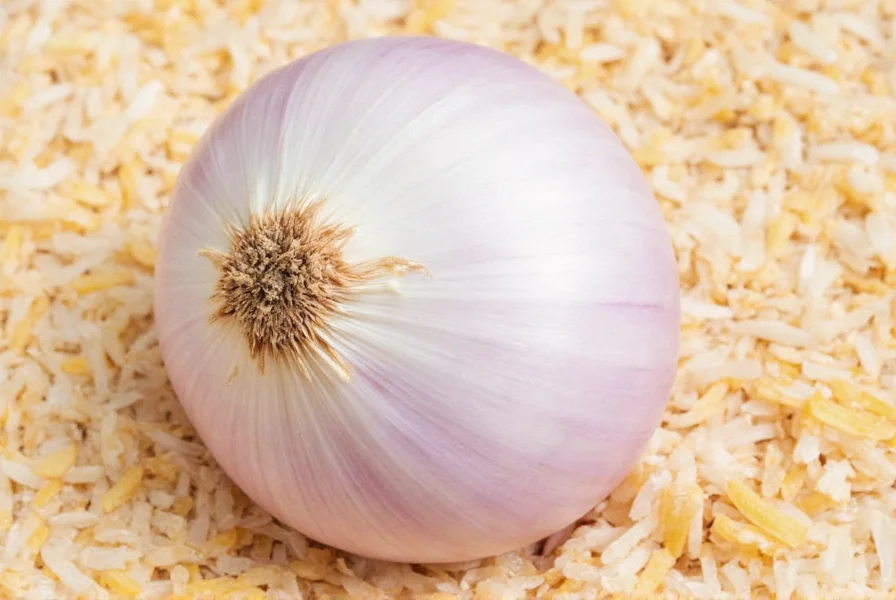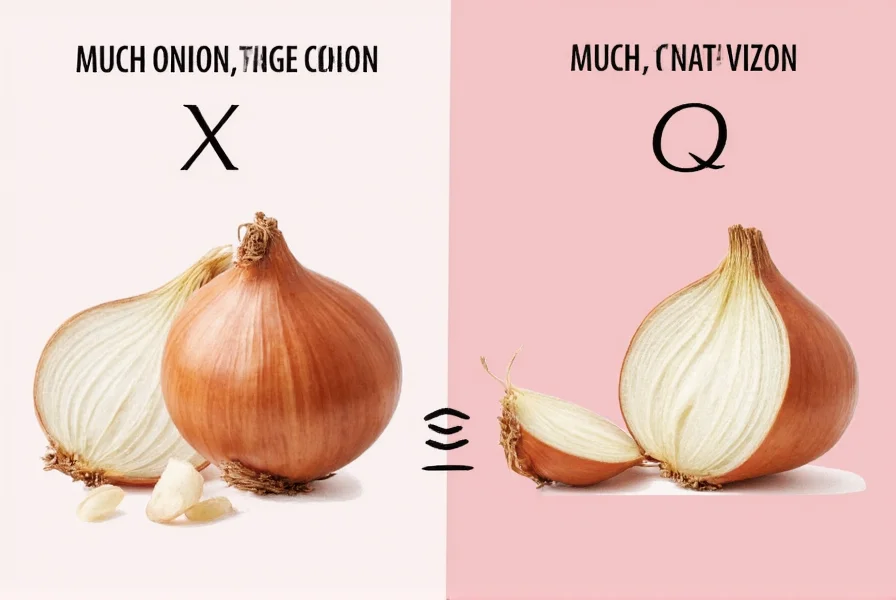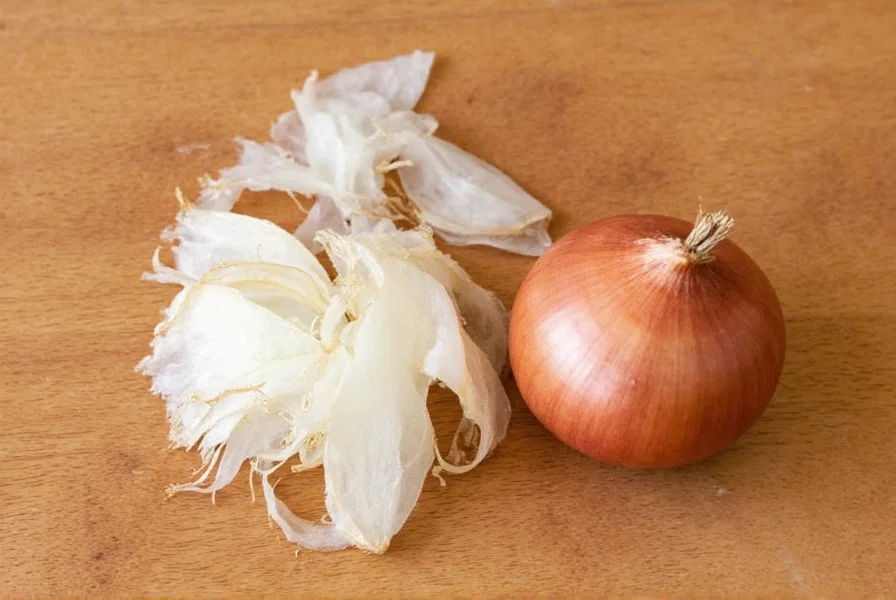Understanding ingredient substitutions is crucial for successful cooking, especially when fresh ingredients aren't available. The conversion between fresh and dried onions is a common kitchen question that affects recipe outcomes significantly.
Understanding Onion Forms and Their Properties
Fresh onions contain approximately 89% water, while dried onion products have most moisture removed. This fundamental difference explains why direct 1:1 substitution doesn't work. Dried onion products come in several forms:
- Dried minced onion - Small, dehydrated pieces retaining onion texture
- Onion powder - Finely ground dehydrated onion
- Onion flakes - Larger dehydrated pieces that rehydrate differently
Each form requires slightly different conversion approaches due to varying surface areas and rehydration properties.
The Science Behind the Conversion Ratio
The standard conversion ratio exists because dehydration removes water content while concentrating flavor compounds. When determining how much dried onion equals one onion, consider these factors:
| Onion Form | Equivalent to 1 Medium Fresh Onion | Rehydration Time |
|---|---|---|
| Dried minced onion | 3 tablespoons | 5-10 minutes in liquid |
| Onion powder | 1 tablespoon | Instant (dissolves immediately) |
| Onion flakes | 3 tablespoons | 10-15 minutes in liquid |
These measurements apply to standard medium onions (about 5oz or 140g). Larger onions would require proportionally more dried product.

Practical Application in Recipes
When substituting dried onion for fresh in your cooking, follow these guidelines for best results:
Dry Applications
In spice blends, rubs, or dry mixes, use the standard conversion ratio directly. The dry environment prevents rehydration issues, making the substitution straightforward. For example, if a dry seasoning recipe calls for 1/2 cup fresh minced onion, use 2 tablespoons of dried minced onion instead.
Wet Applications
In soups, stews, or sauces, consider rehydrating dried onion before adding it to your recipe. Place the dried product in a small bowl with an equal amount of warm water or broth and let it sit for 5-10 minutes. This mimics the texture of fresh onion and prevents it from absorbing too much liquid from your dish.
Common Substitution Mistakes to Avoid
Cooks often make these errors when converting between fresh and dried onions:
- Using equal volumes - Fresh and dried onions have vastly different densities
- Not adjusting liquid content - Dried products absorb moisture from recipes
- Ignoring flavor concentration - Dried onion has more intense flavor per volume
- Substituting without considering texture - Dried products won't provide the same mouthfeel
For delicate dishes like salads or fresh salsas, dried onion makes a poor substitute as it cannot replicate the crisp texture of fresh onion. In these cases, consider alternative fresh alliums like shallots or green onions instead.
Storage and Shelf Life Considerations
Understanding how much dried onion equals one onion becomes particularly valuable when considering storage. Dried onion products offer significant shelf life advantages:
- Fresh onions: 1-2 months in cool, dark place
- Dried minced onion: 12-18 months in airtight container
- Onion powder: 2-3 years when properly stored
This extended shelf life makes dried options practical for emergency food supplies or infrequent cooks. Just remember to note the conversion ratio somewhere visible in your pantry for quick reference when meal planning.

Adjusting Recipes for Optimal Results
When adapting recipes that call for fresh onion, follow these professional chef tips:
- Start with the standard conversion ratio (3:1 for minced, 12:1 for powder)
- Reduce added liquid by 1-2 tablespoons to compensate for dried product absorption
- For long-cooking dishes, add dried onion early to allow full rehydration
- For quick-cooking dishes, rehydrate dried onion first for better texture
- Taste before serving and adjust seasoning as dried onion can intensify during cooking
Remember that personal taste preferences affect how much dried onion equals one onion in practice. Some people prefer a milder onion flavor and might use slightly less dried product than the standard ratio suggests.
Frequently Asked Questions
Can I use onion powder instead of dried minced onion in equal amounts?
No, onion powder is more concentrated than dried minced onion. Use one-third the amount of onion powder compared to dried minced onion. For example, if a recipe calls for 3 tablespoons dried minced onion, use 1 tablespoon onion powder instead.
Does the type of onion affect the dried to fresh conversion ratio?
The basic 3:1 conversion ratio (dried to fresh) remains consistent across yellow, white, and red onions. However, sweet onions like Vidalia have higher water content, so you might need slightly more dried product when substituting for these varieties.
How do I convert recipes that call for onion halves or quarters?
One medium onion quarter equals approximately 2 teaspoons dried minced onion. One half onion equals about 4 teaspoons (1 tablespoon + 1 teaspoon) dried minced onion. For onion powder, divide these amounts by three.
Can I make my own dried onion at home?
Yes, you can dehydrate fresh onions in a food dehydrator or low-temperature oven. Expect approximately 1 cup fresh minced onion to yield 3 tablespoons dried minced onion. Home-dried onion may vary in moisture content, so the conversion ratio might need slight adjustment based on your drying method.
Why does my dish taste too oniony when I use the standard conversion?
Dried onion flavor intensifies during cooking, especially in long-simmered dishes. Start with 75% of the recommended amount, then adjust to taste near the end of cooking. Different brands of dried onion also vary in potency based on processing methods and onion varieties used.











 浙公网安备
33010002000092号
浙公网安备
33010002000092号 浙B2-20120091-4
浙B2-20120091-4